#felician myrbach
Text
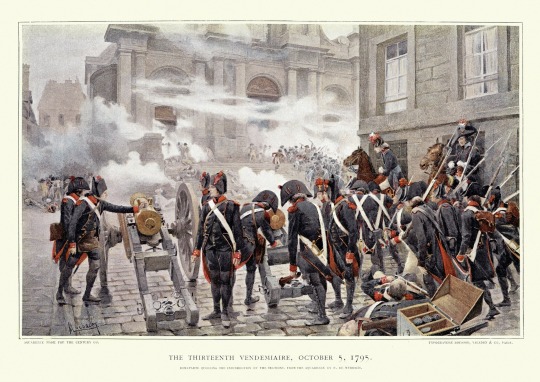
The Thirteenth Vendemiaire, 5 October, 1795. Bonaparte quelling the insurrection of the sections.
by Felician Myrbach
#felician myrbach#art#napoléon#napoleon#bonaparte#napoleon bonaparte#napoléon bonaparte#13 vendémiare#france#paris#insurrection#uprising#french republic#french revolutionary wars#french#streets#royalist#republican#history#gribeauval guns#artillery#cannon#cannons#europe#european#napoleonic#gribeauval#guns
39 notes
·
View notes
Text

Felician von Myrbach-Rheinfeld
9 notes
·
View notes
Note
What's your profile picture and why did you choose it?
It's part or a larger illustration by one of my favourite artists, Felician Myrbach, and it depicts Louis-Auguste Camus de Richemont during the battle of Nicopolis.

Here to download it high res.
The illustration, called Dernier Combat, is included in the work Aventures de Guerre by Frédéric Masson, who collected and published the memoirs of soldiers in a book fully illustrated by Myrbach. (x)
I chose it because, as I said, Myrbach is one of my favourite artist and I absolutely adore his style and simply because I liked the pose and appearance of Camus. Also, I thought it would have matched well with part of the content of my blog: napoleonic and military stuff.
#don't know much about Camus but from his wikipedia page he seems to be quite interesting!#thanks for the ask btw!!#ask#although I still like it i'm waiting to find something else that feels more “personal”#louis auguste camus#art#napoleonic art#myrbach
11 notes
·
View notes
Text
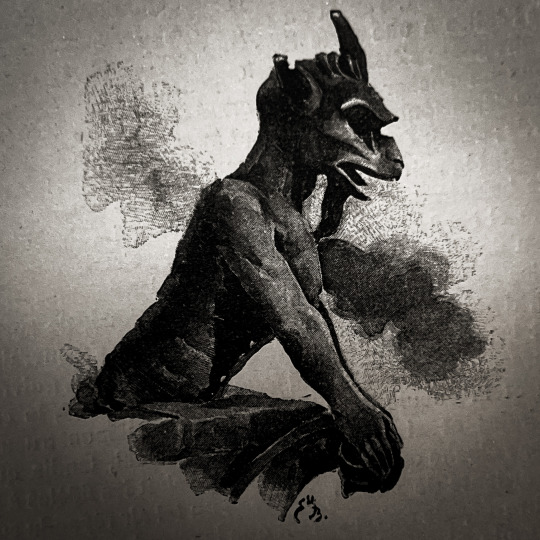
With Halloween only a few days away, we fittingly conclude our Gothic series with a contemplation of those ghoulish creatures known as gargoyles. The word “gargoyle” derives from the Old French “gargoule” meaning “throat” and, strictly speaking, refers to the Gothic architectural detail that channels water away from the walls of buildings. Laon Cathedral, a thirteenth-century structure in Laon, France, is believed to have the earliest medieval gargoyles.
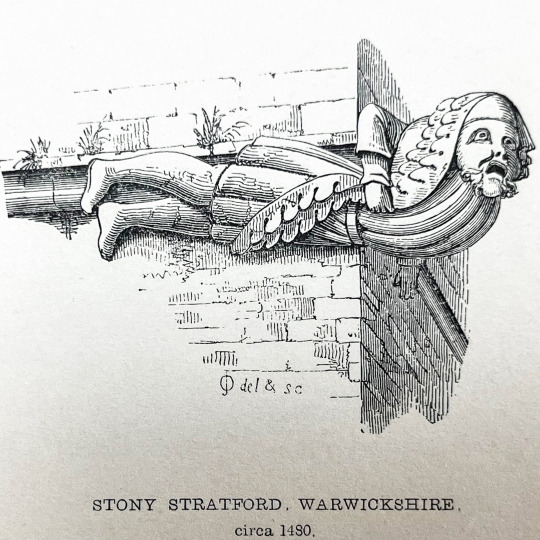
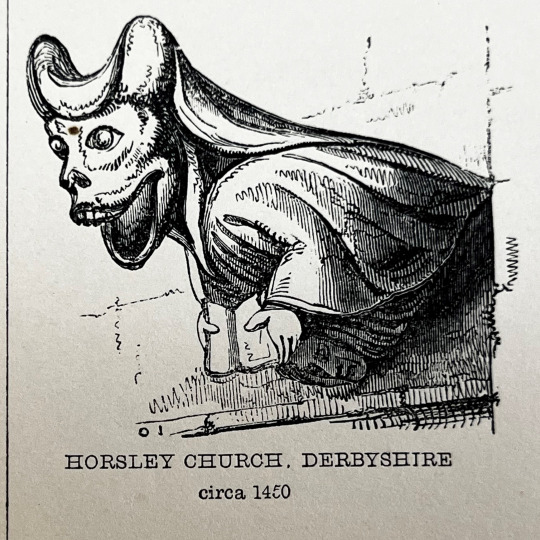
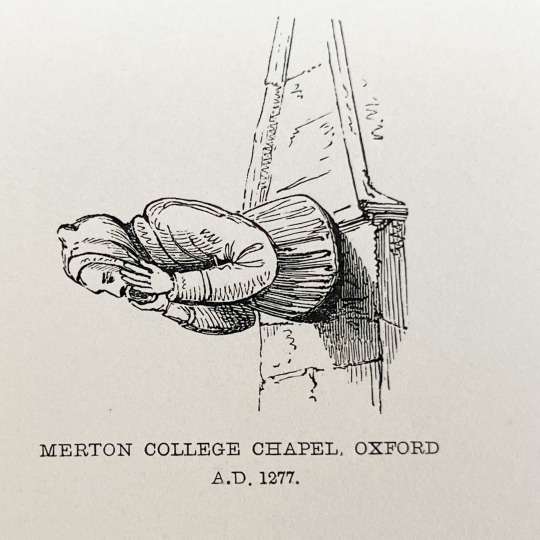
Scholars have long debated whether the chimerical design of these waterspouts was meant to ward off or embody evil spirits…or neither. Regarding gargoyles, art historian Lester Burbank Bridaham advises “we must be wary of reading in too much meaning.” Whether to protect, frighten, or entertain, gargoyles and their related grotesques have captured the human imagination for centuries.
John Henry Parker's Architectural Glossary (1845-1846)
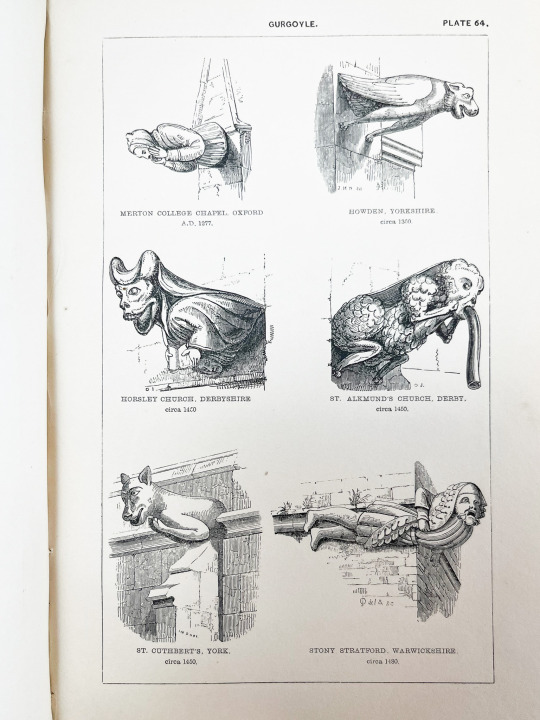
Engraved plate depicting various gargoyles found on English medieval buildings, ca. 1277-1480, from a mid-nineteenth century architectural glossary compiled by John Henry Parker. Wanting to see the Gothic Revival movement flourish, Parker also edited an edition of Thomas Rickman’s Gothic Architecture (1848) and published an Introduction to the Study of Gothic Architecture (1849).
Victor Hugo's Notre-Dame de Paris (1888)

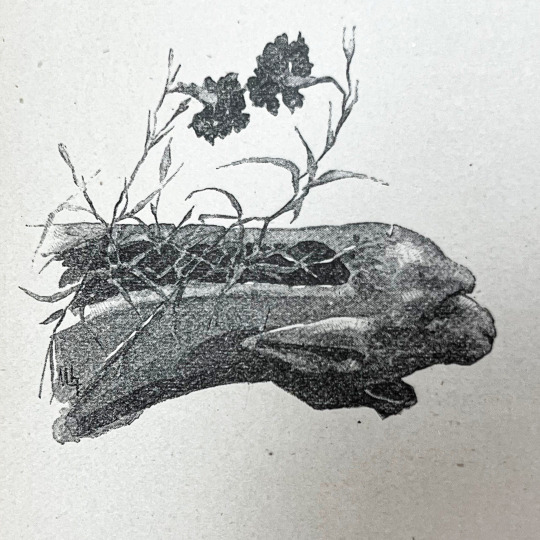
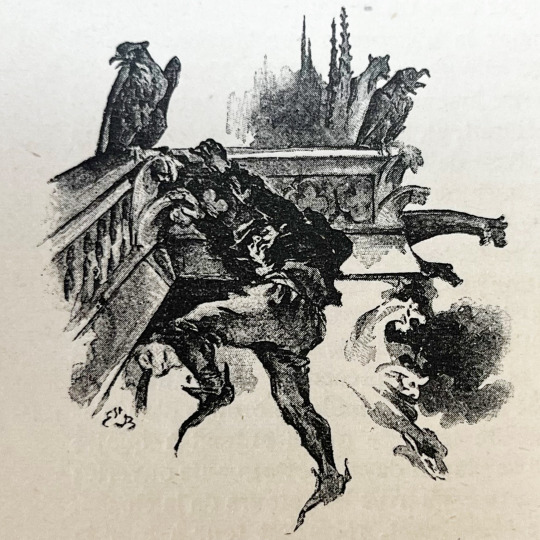
Gargoyles loom large in this illustrated edition of Victor Hugo’s Notre-Dame de Paris, also known by the English title The Hunchback of Notre Dame. The Notre Dame gargoyles do not come to life as they do in the 1996 Disney animated film adaptation, but, in a romantic sense, Quasimodo bears a kinship with the gargoyles since both form integral parts of the famous Parisian cathedral. Quasimodo imbues Notre Dame (including her gargoyles) with life: “Il semblait qu’il s’echappât de lui ... une émanation mystérieuse qui animait toutes les pierres de Notre-Dame…” Illustrations by Ernest Biéler and Felician Myrbach.
L. Frank Baum's Dorothy and the Wizard in Oz (1908)
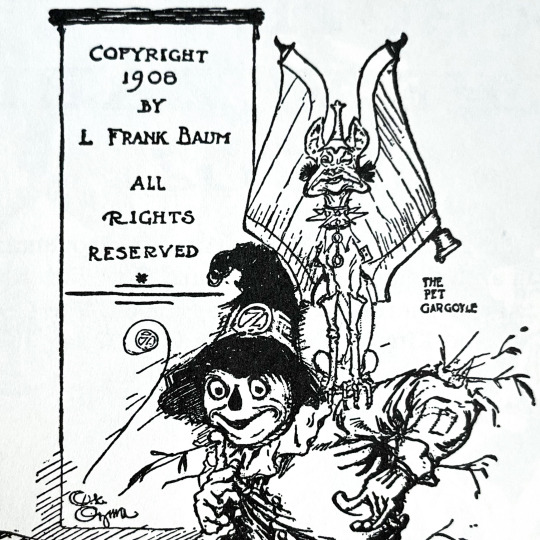
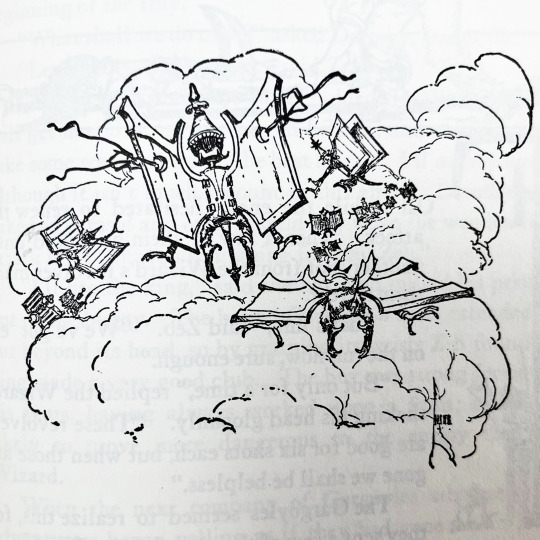
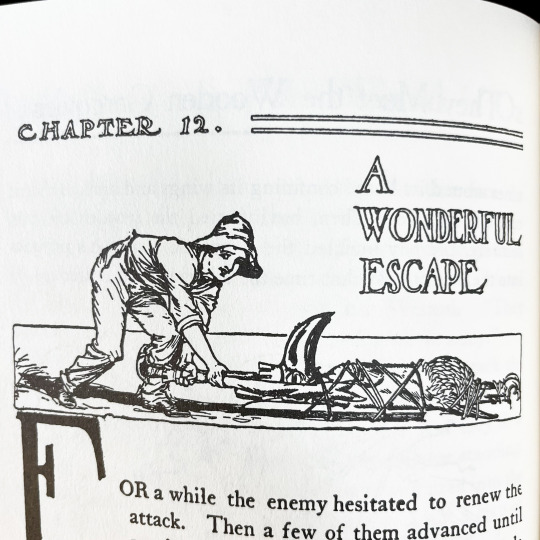
In L. Frank Baum’s Dorothy and the Wizard in Oz, the Wizard, Dorothy, and the rest of their band of adventurers come across the Country of the Gargoyles (or “Gurgles” as Dorothy calls them). The gargoyles in the Ozian universe are sentient creatures who live in a world made entirely out of wood. The gargoyles themselves are also carved from wood and have magical wooden wings that give them the power of flight. In the course of battle with the Gargoyles, Dorothy’s cousin Zeb manages to capture the Gargoyle king and use him as a wooden club. Illustrations by John R. Neill.
Images from:
Parker, John Henry. A Glossary of Terms used in Grecian, Roman, Italian, and Gothic Architecture. Oxford: John Henry Parker, 1845-1846. Catalog record: https://bit.ly/3SJyZPA
Hugo, Victor. Notre-Dame de Paris. Paris: C. Marpon et E. Flammarion, ca. 1888. Catalog record: https://bit.ly/3SBpwtO
Baum, L. Frank. Dorothy and the Wizard in Oz. Chicago: Reilly & Lee, 1908.
99 notes
·
View notes
Text
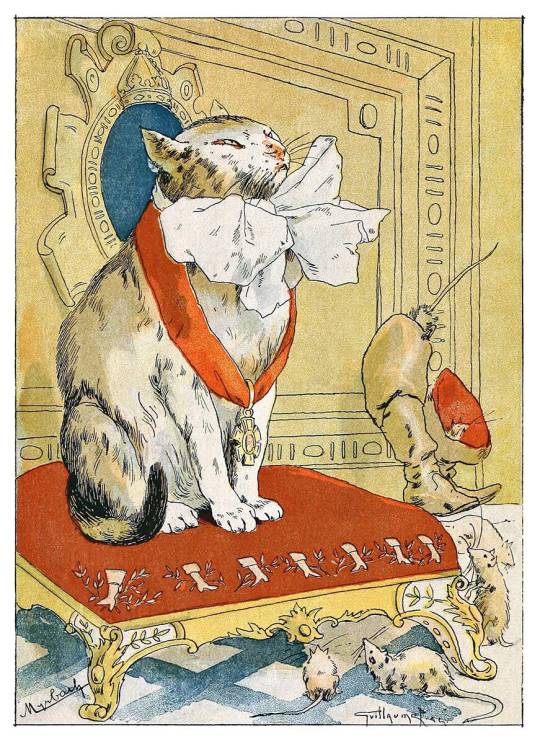
'Puss becomes a great lord'
Illustration for Le chat botté by Felician von Myrbach-Rheinfeld
Published approximately 1914
#vintage art#vintage illustration#colour illustration#puss in boots#le chat botte#le chat#illustration
1 note
·
View note
Photo

Prussian Garde du Corps outside the French Embassy in Berlin, sharpening their swords and demanding war in 1806
Illustrated by Austrian artist Felician Myrbach, 1906
4 notes
·
View notes
Photo

Felician von Myrbach Farbholzschnitt ‘Beethoven Monument in Heiligenstadt, Wien’ ca.1902.
(via eBay)
#kunst#art#farbholzschnitt#colour woodcut#woodblock print#wood engraving#woodblock & print#beethoven monument#wien heiligenstadt#vintage print#20th century print#printmaking#felician von myrbach#artwork#austrian artist#austrian printmaker#österreichische künstler#1902#ludwig van beethoven#secession wien#vereinigung bildender künstler Österreichs
45 notes
·
View notes
Text

Felician Myrbach, Battle of Aspern and Essling 1809.
14 notes
·
View notes
Text

Les Trois Grâces", huile sur toile
Koloman MOSER ( 1868-1918 - Autriche)
Koloman Moser, dit « Kolo » (Vienne, 30 mars 1868 – Vienne le 18 octobre 1918) est un peintre et designer autrichien, représentatif de l'Art nouveau de Vienne.
Koloman Moser était le fils de l'administrateur de l'institut Theresianium de Vienne, Josef Moser, et de sa femme Theresia, née Hirsch. Il fut baptisé en l'église Saint-Paul du 4e arrondissement de Vienne et fréquenta une école de commerce. En 1885, il réussit l'examen d'entrée à l'académie des beaux-arts de Vienne sans en avoir averti ses parents. Il eut comme professeurs Franz Rumpler entre 1886 et 1889, Christian Griepenkerl entre 1889 et 1890 et Matthias von Trenkwald entre 1890 et 1893. Après la mort de son père en 1888, Koloman finança ses études grâce à des illustrations dans divers magazines d'arts comme le Wiener Mode ou le Meggendorfer-Blätter. Sur la recommandation de son professeur Trenkwald, Moser fut engagé comme professeur de dessin des enfants de l'archiduc Karl-Ludwig au château Wartholz à Reichenau an der Rax. C'est de cette époque que date son amitié avec Carl Otto Czeschka, à qui il transmit la place de professeur de dessin.
De 1892 à 1897, Koloman fut membre du Siebener-Club, d'où partit plus tard le mouvement de la Sécession viennoise. Entre 1893 et 1895, il étudia à la Kunstgewerbeschule (école des arts appliqués) où il eut comme professeur Franz Matsch et Felician Myrbach et où il enseigna lui-même à partir de 1899. Il fut admis en 1896 à la Künstlerhaus de Vienne mais en démissionna 6 mois plus tard. En 1897, il fut membre fondateur de la Sécession viennoise. Il réalisa près de 140 illustrations pour le magazine de ce mouvement, Ver Sacrum, et fut en grande partie responsable de l'organisation des expositions. À l'automne 1897, il entreprit un voyage à Munich, Nuremberg, Bamberg, Leipzig, Dresde et Prague.
À cette époque, Koloman Moser vivait essentiellement de métiers artistiques. Il fut influencé par le couple d'artistes écossais Charles Rennie Mackintosh et Margaret MacDonald Mackintosh ainsi que par le mouvement anglais Arts & Crafts, exposés à la Sécession. En 1899, Moser voyagea à Prague, Dresde et Berlin. En 1900, il se rendit à l'Exposition universelle de Paris, en passant par Munich et Strasbourg. L'année suivante, il visita les verreries de Bohême à Klostermühle et Winterberg et se rendit à Dresde avec Carl Moll.
En 1902, Moser s'installa avec sa mère et sa sœur dans l'immeuble-atelier construit par Josef Hoffmann dans le quartier viennois de Hohe Warte, dans l'arrondissement de Döbling. Carl Moll résidait dans le même immeuble. Moser meubla lui-même l'appartement. Cet été-là, il se rendit à Abbazia, Lovran, Trieste, Venise et Padoue. En 1903, Josef Hoffmann fonda avec Moser et l'industriel Fritz Wärndorfer les Wiener Werkstätte. Le but était de favoriser l'artisanat artistique plus que la production industrielle. En été 1903, il voyagea à nouveau en compagnie de Moll à Munich et Berne, où il rencontra Ferdinand Hodler et Cuno Amiet, puis à Bâle, Paris, Bruges, Scheveningen, Anvers, Lubeck et Hambourg. En 1904, il se rendit en compagnie de sa future femme Ditha Mautner Markhof et de sa future belle-mère à Riva (Lac de Garde), Vérone et Venise. En septembre, il alla à Berlin où étaient exposées pour la première fois des œuvres des Wiener Werkstätte.
En 1905, il quitta la Sécession viennoise avec un groupe formé autour de Gustav Klimt. Il épousa Ditha Mautner Markhof le 1er juillet et se convertit au protestantisme, religion de sa femme. Le voyage de noce les conduisit au Salzkammergut à Hallstatt et Sankt Gilgen. Moser quitta l'appartement de Döbling et s'installa à Landstrasse, dans l'hôtel particulier des Mautner Markhof. Là encore, il meubla lui-même ses appartements. Le jeune couple résida régulièrement dans la villa de Mautner Markhof à Semmering. En 1906, un premier fils, Karl, naquit. L'année suivante, Koloman Moser quitta les Wiener Werkstätte après un différend avec Fritz Wärndorfer et se consacra de plus en plus à la peinture. L'été, il se rendit à Venise et Padoue, en 1908, il alla à nouveau à Venise avec sa femme et Hermann Bahr. En 1909 naquit un deuxième fils, Dietrich.
En 1908, il participa à l'exposition organisée par le groupe formé autour de Gustav Klimt à Vienne, en 1909 à une exposition internationale à Vienne ainsi qu'à l'exposition d'art chrétien à Düsseldorf. En 1911 eut lieu la seule exposition qui lui fut entièrement consacrée, à la galerie Miethke de Vienne, et il participa aussi à une exposition internationale à Rome. En 1912, il se rendit au lac de Garde et dans le Haut-Adige et participa à une grande exposition à Dresde. En amenant son fils Dietrich dans un sanatorium en Suisse en 1913, il rencontra à nouveau Ferdinand Hodler à Genève qui eut une influence considérable sur l’œuvre picturale de Moser. Il se rendit à nouveau à Venise après avoir participé à la première exposition internationale de la Sécession viennoise à Rome, à une grande exposition à Düsseldorf ainsi qu'à une exposition à Mannheim. En 1916, il exposa ses œuvres lors de l'exposition d'art viennois à Berlin.
En 1916, il tomba malade et mourut en 1918 d'un cancer du larynx. Il fut enterré le 21 octobre suivant au cimetière de Hietzing. En son honneur, une rue fut baptisée de son nom en 1969 à Donaustadt. En 1989, une pièce de 500 Schilling fut frappée avec son portrait. Sur la façade de son appartement à Landstrasse se trouve une plaque commémorative.
6 notes
·
View notes
Photo

Felician Myrbach Freiherr von Rheinfeld (Zalishchyky, 1853 - Klagenfurt, 1940)
Orchideen.
3 notes
·
View notes
Photo




Four poster designs by Bertold Löffler from Die Fläche II, 1910.
“Die Fläche (The Surface) was a Viennese graphic arts periodical published in two volumes featuring the work of artists associated with the Wiener Werkstätte. The first volume was published in 1903/1904 by Felician Baron Myrbach and the second in 1910 by Bertold Löffler in association with Anton Scholl & Co.They contained a total of 124 pages of contemporary applications of graphic design with examples of poster art, books, wallpaper, textiles, stained glass, inlay, embroidery, monograms, business cards, and costume jewelry.”
0 notes
Text

Lieutenant Richemont shakes down an Albanian horseman during the Battle of Nicopolis in October 1798
by Felician Myrbach
#felician myrbach#battle of nicopolis#art#félicien de myrbach rheinfeld#lieutenant richemont#revolutionary france#french revolutionary wars#french#france#albanian#ottoman#ottoman empire#greece#nicopolis#history#preveza#ruins#europe#european#mediterranean#watercolour#cavalry#napoleonic
47 notes
·
View notes
Photo

Don Quichotte, illustrated by Felician Myrbach
22 notes
·
View notes
Photo

F. de Myrbach (1853–1940)
Officers of the élite Prussian Regiment Gensd'armes, wishing to provoke war, sharpen their swords on the steps of the French embassy in Berlin in the autumn of 1806.
7 notes
·
View notes
Text

Charge of the Mamelukes at the Battle of Austerlitz by Felician Myrbach
#battle of austerlitz#mamluks#mamelukes#cavalry charge#art#cavalry#france#egypt#europe#history#felician myrbach#napoleonic#napoleonic wars#mamluk#imperial guard#mounted chasseurs#chasseurs
82 notes
·
View notes
Text

Le combat de Don Quichotte et du Chevalier de la Blanche-Lune.
by Felician Myrbach
#don quixote#don quichotte#don quijote#duel#combat#art#felician myrbach#knight errant#beach#barcelona#medieval#middle ages#knights#spain#spanish#europe#european#history#chivalric romance#chivalry#armour#hidalgo#knight#plumes#joust#jousting#sansón carrasco#chevalier de la blanche-lune#knight of the white moon#knight of the mirrors
403 notes
·
View notes